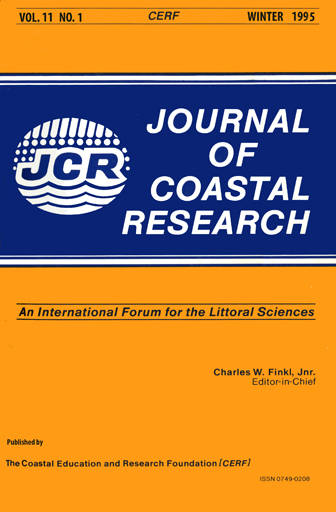Wave Field Response to Frontal Passages During SWADE
Keywords:
Cold front, radar, fetch, sea state, wind waves, data buoyAbstract
The response of a wave field to turning winds following the passage of two cold fronts off the U. S. East Coast around St. Valentine's Day, 1991 is studied using data collected as a part of the Surface Wave Dynamics Experiment (SWADE). The data include hourly wind and directional wave observations from National Data Buoy Center (NDBC) buoys, wide-area coverage airborne radar estimates of wind speed and directional wave spectra, and wind and surface current analysis fields from numerical models. The data permit the wave field evolution to be tracked over a three day period and over a large area with both fine temporal and spatial resolution. Initially fully developed under -- 12 mls southerly winds, the wave field evolves through a state of mixed wind, sea and swell under westerly winds to a final, purely fetch-limited state under -- 14 mls northwesterly winds. Analysis of the directional response of the wave field is complicated by a spell of low and variable winds between the two cold fronts. However, by making use of both spatial and temporal data, we arrive at credible estimates of the directional relaxation parameter as a function of frequency. The inferred relaxation rates, although faster than observed by HASSELMANN et al. (1980), are consistent with the numerical results of YOUNG et al. (1987). The observed fetch-limited growth rates agree with those of WALSH et al. (1989). The remotely sensed winds agree well with the in situ data. The radar spectra agree with the buoy data in higher sea states but exhibit poor response in low sea states.


